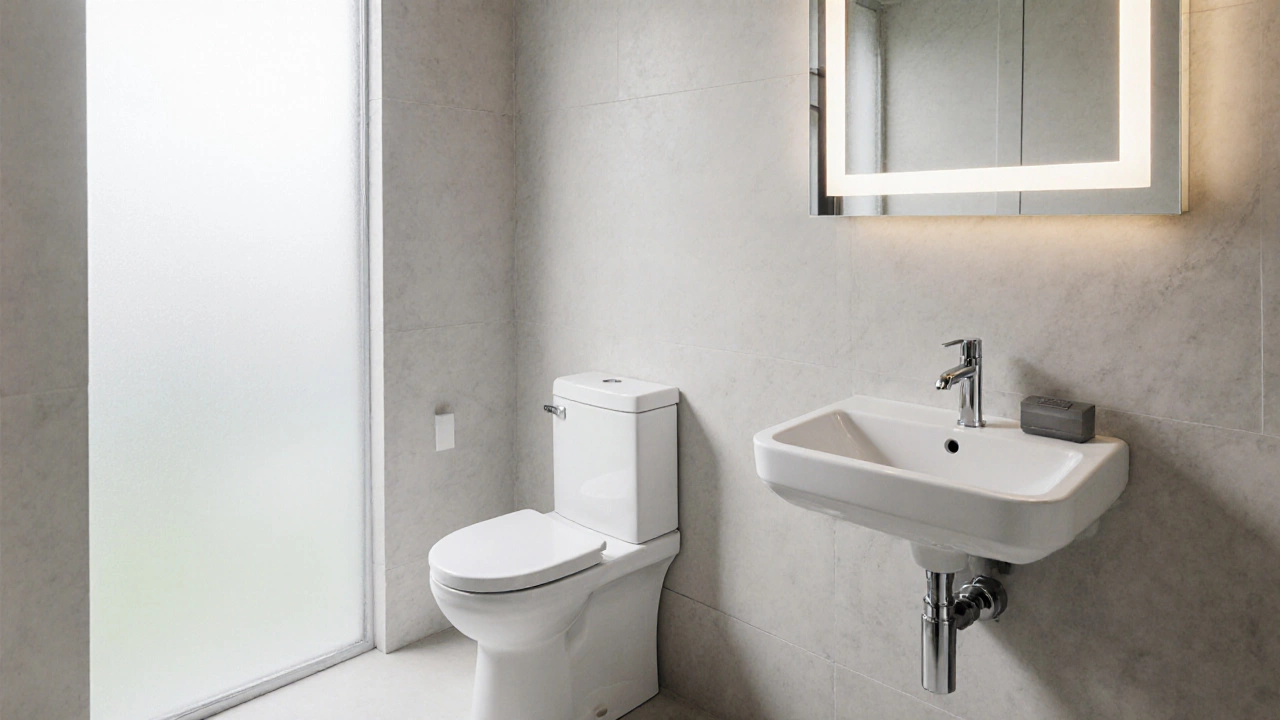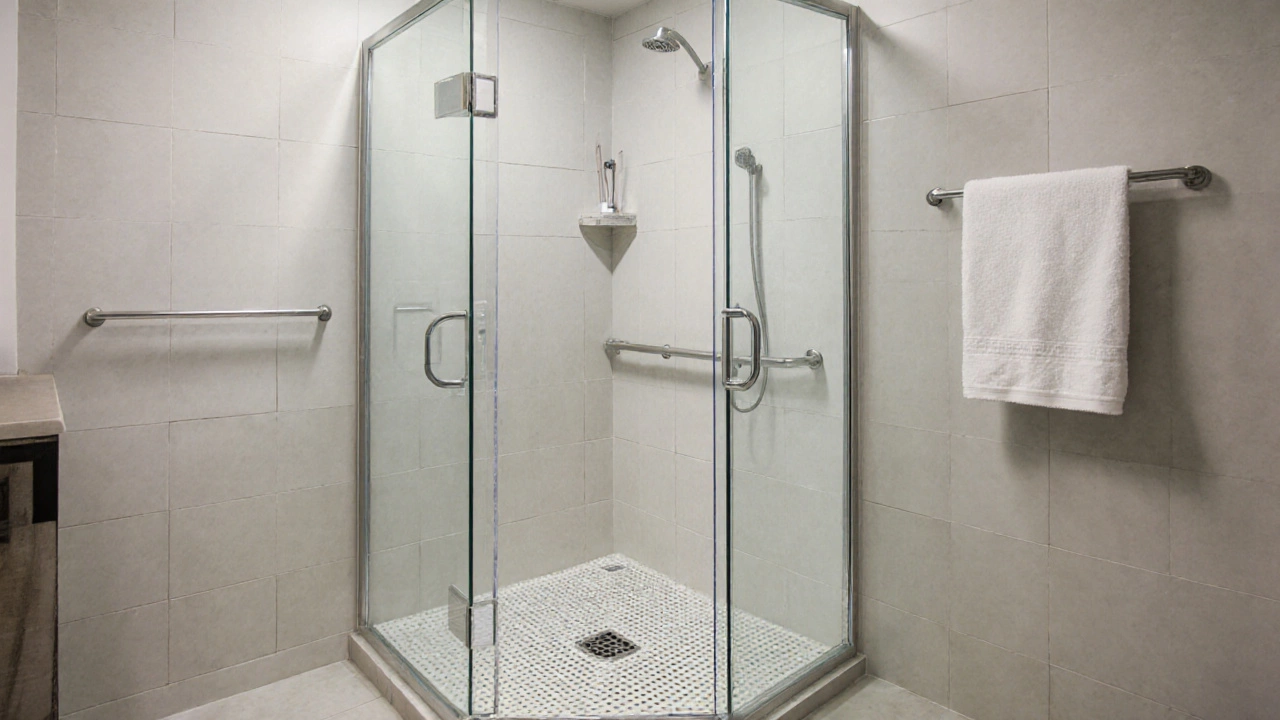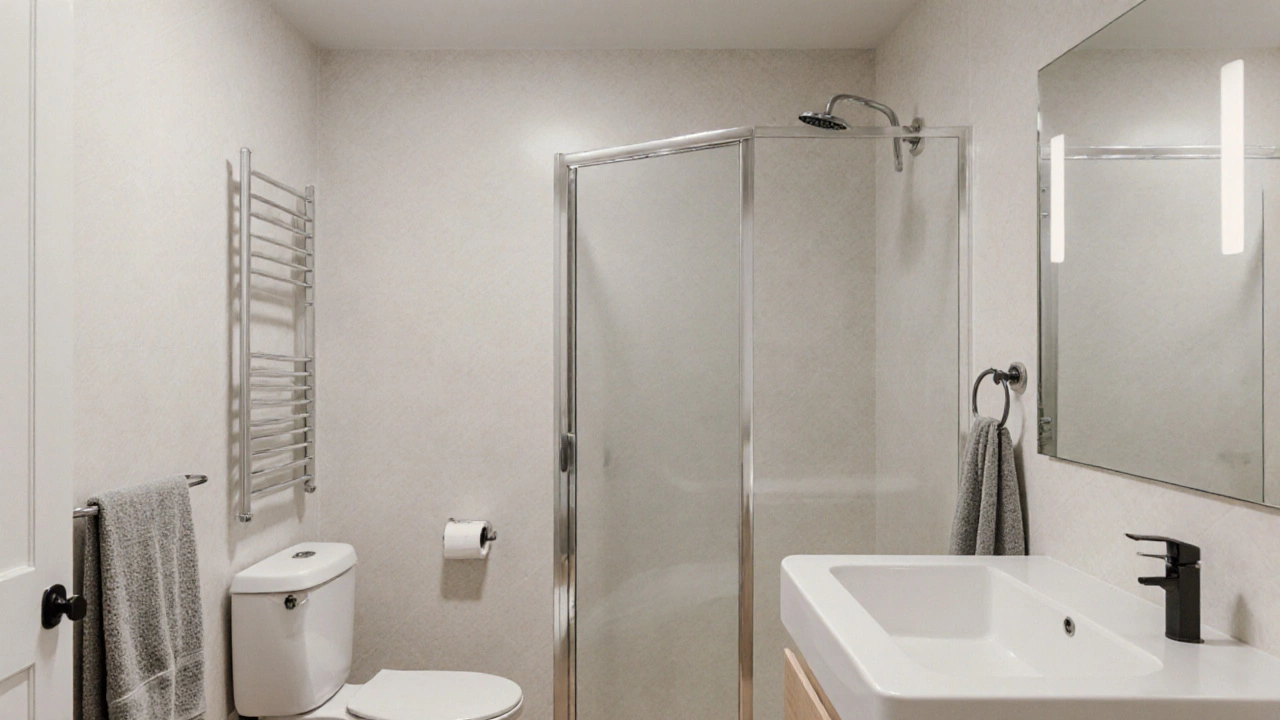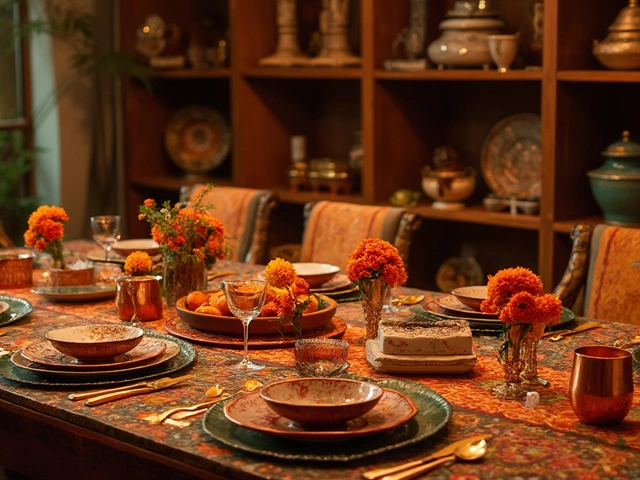
Most people think of a bathroom as just a room with a toilet and a sink. But if you’ve ever tried to get ready in the morning without all the basics, you know it’s not that simple. A bathroom doesn’t work unless it has the right five pieces in place. These aren’t fancy upgrades or luxury add-ons-they’re the non-negotiables that make the space actually usable.
The Toilet
The toilet is the core of any bathroom. Without it, you’re not really using a bathroom-you’re using a room with water. Modern toilets come in different types: two-piece, one-piece, wall-mounted, and smart models with heated seats and automatic flushing. But no matter the style, the function stays the same: handle waste safely and efficiently. Most homes use standard gravity-flush models that use 1.28 to 1.6 gallons per flush. That’s a big improvement over older models from the 90s, which used up to 3.5 gallons. If your toilet leaks or runs constantly, it’s not just annoying-it’s wasting up to 200 gallons a day. Fix it or replace it. Don’t ignore it.
The Sink and Faucet
The sink is where you wash your hands, brush your teeth, splash water on your face, and rinse off shaving cream. It’s the most used fixture in the bathroom after the toilet. A good sink isn’t just about looks-it’s about depth, material, and ease of cleaning. Porcelain, ceramic, and stainless steel are the most common materials. Undermount sinks hide the rim for easier wiping, while vessel sinks sit on top and look stylish but can be harder to clean around the edges. The faucet matters too. Single-handle models are easier to use with wet hands, and pull-down or pull-out spouts help you rinse the sink or fill a cup without splashing everywhere. Look for ceramic disk valves-they last longer than rubber washers and won’t drip after a few years.
The Shower or Bathtub
Here’s where people split: shower or tub? In most modern homes, a walk-in shower is the default. It’s faster, uses less water, and works better for aging-in-place. A standard shower stall is 36 by 36 inches, but 48 by 48 is more comfortable. Glass doors or curtains keep water in, and a good drain prevents flooding. If you have a bathtub, it’s usually 60 inches long. But if you’re not soaking regularly, the tub just takes up space and collects mildew. Many people are replacing tubs with showers, especially in powder rooms and secondary bathrooms. If you do keep a tub, make sure it has a non-slip surface and a grab bar nearby. Safety matters more than tradition.

The Mirror
A mirror isn’t just for checking your hair. It’s essential for applying makeup, shaving, brushing teeth, and even just seeing if you’re dressed right. A good bathroom mirror should be large enough to see your whole face-most are 20 to 30 inches wide. Fog-free mirrors are a game-changer. They use built-in heating elements or anti-fog coatings so you don’t have to wipe them down after every shower. LED-lit mirrors are popular now because they give even, shadow-free lighting. That’s crucial when you’re trying to get your eyeliner right. Mount the mirror at eye level for the average user-about 57 to 60 inches from the floor. If you have kids or multiple users, consider a slightly lower placement or a second mirror.
The Towel Rack or Bar
This one gets overlooked. You can have the fanciest toilet, the most stylish sink, and a spa-like shower-but if you don’t have a place to hang a towel, you’re stuck with damp, smelly fabric on the floor. A towel bar should be mounted at least 48 inches above the floor and placed near the shower or sink. Most people use a single bar, but double bars or heated towel racks are better for households with multiple users. Heated racks dry towels faster and kill bacteria, which helps prevent mildew smells. Don’t use a hook unless you’re in a tiny half-bath. Hooks hold one towel poorly and leave water dripping everywhere. A bar lets towels hang flat and dry evenly. Also, avoid placing the towel rack right next to the showerhead-steam will make it damp all day.
Why These Five?
These five items-toilet, sink, shower/tub, mirror, towel rack-are the only things you absolutely need to use a bathroom safely and hygienically. Everything else is optional. A toilet paper holder? Necessary, but it’s a small add-on to the toilet. A soap dispenser? Helpful, but you can use a bar of soap on a dish. A trash can? Good for hygiene, but not part of the core function. A vanity cabinet? Great for storage, but you can store things elsewhere. The five listed above are the foundation. Skip any one of them, and the bathroom stops working the way it should.

What About Storage?
People often confuse storage with necessity. Cabinets, shelves, and drawers are useful, but they’re not part of the five essential pieces. You can live without them-just keep your toiletries in a basket on the counter or in a nearby closet. The real test? If you stripped the bathroom down to just these five items, could you still brush your teeth, wash your hands, shower, dry off, and use the toilet? If yes, you’ve got the essentials. If no, you’re missing something.
Common Mistakes to Avoid
- Skipping the towel rack-people think they can hang towels on the shower curtain rod. That’s a bad idea. Wet towels don’t dry well there, and the rod isn’t meant to hold weight.
- Too-small mirror-a 12-inch mirror looks cute but doesn’t let you see your whole face. You’ll end up leaning in, which is awkward and unsafe.
- Wrong faucet height-if the spout is too low, you can’t fill a cup or wash your hair in the sink. Aim for at least 6 inches of clearance under the spout.
- One-size-fits-all shower-if you’re over 6 feet tall, a 36-inch shower feels cramped. Go bigger if you can.
Final Thought
Building or remodeling a bathroom? Start with these five. Don’t get distracted by fancy lighting, heated floors, or smart mirrors. Those are nice, but they’re not what makes the room functional. Focus on getting the basics right. A toilet that flushes cleanly, a sink that doesn’t leak, a shower that drains fast, a mirror that stays clear, and a towel rack that actually dries towels. Nail those, and your bathroom will work every single day-no matter how big or small it is.
What are the 5 essential pieces in a bathroom?
The five essential pieces in a bathroom are the toilet, sink and faucet, shower or bathtub, mirror, and towel rack. These are the only fixtures you need to use the bathroom safely and hygienically every day. Everything else-like storage, lighting, or decor-is optional.
Can I skip the bathtub if I only take showers?
Yes, you can and often should skip the bathtub if you never use it. Bathtubs take up space, use more water, and are harder to clean. Most modern homes install walk-in showers instead, especially in secondary bathrooms. A 48x48 inch shower with a good drain and grab bar is more practical and safer for most people.
Do I need a heated towel rack?
Not strictly, but it’s a smart upgrade. A regular towel bar works fine, but a heated one dries towels faster, prevents mildew, and feels luxurious after a shower. If you live in a humid climate or have a busy household, it’s worth considering. Just make sure it’s installed away from direct water spray.
Why is the mirror size important?
A mirror that’s too small forces you to lean in to see your face, which is uncomfortable and unsafe, especially when you’re holding a razor or hot curling iron. A 20- to 30-inch-wide mirror lets you see your full face from a normal standing position. For multiple users, consider mounting it lower or adding a second one.
Is a vanity cabinet a bathroom essential?
No. A vanity cabinet is storage, not a functional fixture. You can store toiletries in a basket, shelf, or closet elsewhere. The five essentials are about use, not storage. If you have space for a vanity, great-but don’t think you need it to make the bathroom work.




